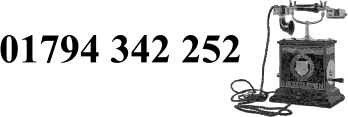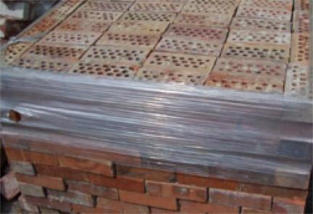OPENING TIMES
ADDRESS

History of Bricks

OAK TREE FARM
DUNBRIDGE LANE
AWBRIDGE ROMSEY
SO51 0GQ
COPYRIGHT© WWW.ROMSEYRECLAMATION.COM 2024 ALL RIGHTS RESERVED: HOSTED BY AH MARKETING
OPEN 8 TILL 4.00PM
MON TO FRIDAY
8.15 TILL 12 NOON SATURDAYS
CLOSED SUNDAYS

The handmade bricks are more expensive and are typically older and with much more character to them, they have a rough-textured
surface and are lighter and softer than machinemade bricks.
There are myriad descriptions of a handmade brick, the common ones are Soft reds/Soft oranges (the common colours of course),
crease faced bricks, red rubbers (so called because the softness of the surface allows a pattern to be `rubbed` in using a hand file or
special tool, popular in the Victorian era but now almost obsolete)






Reclaimed bricks are usually divided simply into two kinds, Handmade and Machinemade.
They are also available in many colours; you can buy red, yellow, orange, blue, purple, brown, white, and black bricks in both hand
and machine made, although by far the most common are Reds and Oranges, and every imaginable shade in between the two.
Machinemade bricks are harder and heavier than handmades, and the surface is often smooth and shiny, although this is not alway
the case. The machinemade bricks are most commonly also known as `Wire-cuts` because a lot of them have fine, close lines scored
along both wide faces which are from where they were made:
A wire much like a cheese wire was used to cut the clay from the top and bottom of a brick mould, see below for a few
machinemades. Note: not all machinemade bricks have this it is only one, albeit common, method that was used.



The biggest challenge when buying or selling bricks is matching them up to existing work, if you are building extensions or
adjoining walls of any kind, or if you just want to keep the new building in keeping with the appearance and atmosphere of
structures already in place what you must do, if possible, is get a sample or 2 from the existing brickwork and bring it in to our yard
and match it up to our stock.


Another speciality brick that we always try to stock is the `Tudor brick`, these
are thinner than normal at 2" to 2.25" thick, and are usually used to build
fireplaces.
They are not usually quite as old as the tudor period, but are amongst the oldest
bricks available, usually 100-200 years old or even more.
There are various other brick types that are fairly commonly known, although
are used far less often due to the area they come from or simply their cost and
speciality of application. For example, you can get some Machinemade bricks
known as 18-Hole Bridgewaters
Which are very hard and have 18 holes
in them much like the common
engineering brick.
There are many ways to distinguish Handmades from Machinemades, and it is a case of
seeing and knowing straight away to the expert eye, the most common mistake that people
make is that any brick with a `frog` is a machinemade. The frog is the indentation found in
most bricks, often in the shape of an elongated pyramid inverted in the top of the brick, in
other words `cut-out` of the brick.
The brief recent history of bricks in the UK explains the most common problem we face
with using them:
Before industrialisation really took hold in this country, every town in every part of the
UK would have had their own brickworks, or brickmaker.
In the mid-victorian era when some of these brickmakers became more strongly
established using the new machines they had access to, some became the major supplier
of bricks and indeed tiles in their area, and many of them continue today, or were at least
making bricks in the same style until the mid 20th Century.
The problem is now this: all these brickmakers, successful or not, made different bricks.
The various areas of the UK offer different types of clay in any case, but within these areas different methods were used, and
different people approached those methods in their own way,






“PLEASE BRING
WELLIES”

E&OE All prices are subject to change at any time
Romsey Reclamation Ltd is a limited company registered in England& wales no 3567084
Registered office Highland House, Mayflower Cl, Chandler's Ford, Eastleigh SO53 4AR


- BRICKS RECLAIMED
- BRICKS NEW
- COPPING BRICKS & BRICK SPECIALS
- CHIMNEY POTS
- CRASH BARRIERS
- DOORS RECLAIMED
- FIREPLACES
- FLINT STONES
- GALVANISED ROOFING SHEETS
- GARDEN BENCHES
- GARDEN FURNITURE
- INTERNAL FURNITURE
- GATES
- GRANITE SETS & COBBLES
- HOW TO BUILD A WORKSHOP
- OAK FIREPLACE BEAMS
- OAK TIMBER SERVICES
- OAK FLOORING
- OLD AGRICULTURE FARMING EQUIPMENT
- WOODEN FLOORBOARDS RECLAIMED
- PLYWOOD SHEETS
- POST BOXES
- REDLAND DELTA ROOF TILES
- ROOF SLATES RECLAIMED
- ROOF TILES RECLAIMED
- FINIALS & RIDGES
- RADIATORS CAST IRON
- SCAFFOLD BOARDS
- SCAFFOLD POLES
- SIGNS
- TELEGRAPH POLES
- TIMBER RECLAIMED
- TREATED TIMBER
- TROUGHS
- WALLING STONES
ADDRESS
OAK TREE FARM
DUNBRIDGE LANE
AWBRIDGE
ROMSEY
SO51 0GQ
CONTACT
Phone: 01794 342 252
Fax: 01794 342 221
History of Bricks



- HOME
- PRODUCTS
- BRICKS RECLAIMED
- BRICKS NEW
- CAST IRON RADIATORS
- COPPING BRICKS & BRICK SPECIALS
- CHIMNEY POTS
- CRASH BARRIERS
- DOORS RECLAIMED
- FIREPLACES
- FLINT STONES
- GALVANISED ROOFING SHEETS
- GARDEN BENCHES
- GARDEN FURNITURE
- GATES
- GRANITE STES & COBBLES
- HOW TO BUILD A WORKSHOP
- INTERNAL FURNITURE
- OAK FIREPLACE BEAMS
- OAK TIMBER SERVICES
- OAK FLOORING
- OLD AGRICULTURE FARMING EQUIPMENT
- WOODEN FLOORBOARDS RECLAIMED
- PLYWOOD SHEETS
- POST BOXES
- RADIATORS CAST IRON
- REDLAND DELTA ROOF TILES
- ROOF SLATES RECLAIMED
- ROOF TILES RECLAIMED
- FINIALS & RIDGES
- SCAFFOLD BOARDS
- SIGNS
- TELEGRAPH POLES
- TIMBER RECLAIMED
- TREATED TIMBER
- TROUGHS
- WALLING STONES
- CONTACT US
- DELIVERY
- FIND US
- SLEEPERS
- SCAFFOLD BOARDS
- OAK FIREPLACE BEAMS
- PAVING CENTRE
- LATEST ARRIVALS
- UNUSUAL GIFT IDEAS
COPYRIGHT© WWW.ROMSEYRECLAMATION.COM 2022
ALL RIGHTS RESERVED: HOSTED BY AH MARKETING
Open 8am till 4.00pm Monday - Friday
8.15am till 12 noon Saturdays
Closed Sundays

The handmade bricks are more
expensive and are typically older and
with much more character to them, they
have a rough-textured surface and are
lighter and softer than machinemade
bricks.
There are myriad descriptions of a
handmade brick, the common ones are
Soft reds/Soft oranges (the common
colours of course), crease faced bricks,
red rubbers (so called because the
softness of the surface allows a pattern
to be `rubbed` in using a hand file or
special tool, popular in the Victorian era
but now almost obsolete)

Reclaimed bricks are usually divided
simply into two kinds, Handmade and
Machinemade.
They are also available in many colours;
you can buy red, yellow, orange, blue,
purple, brown, white, and black bricks in
both hand and machine made, although
by far the most common are Reds and
Oranges, and every imaginable shade in
between the two.
Machinemade bricks are harder and
heavier than handmades, and the surface
is often smooth and shiny, although this is
not alway the case. The machinemade
bricks are most commonly also known as
`Wire-cuts` because a lot of them have
fine, close lines scored along both wide
faces which are from where they were
made:
A wire much like a cheese wire was used
to cut the clay from the top and bottom of
a brick mould, see below for a few
machinemades. Note: not all
machinemade bricks have this it is only
one, albeit common, method that was
used.


The biggest challenge when buying or
selling bricks is matching them up to
existing work, if you are building
extensions or adjoining walls of any kind,
or if you just want to keep the new
building in keeping with the appearance
and atmosphere of structures already in
place what you must do, if possible, is get
a sample or 2 from the existing brickwork
and bring it in to our yard and match it up
to our stock.


Another speciality brick that we always
try to stock is the `Tudor brick`, these are
thinner than normal at 2" to 2.25" thick,
and are usually used to build fireplaces.
They are not usually quite as old as the
tudor period, but are amongst the oldest
bricks available, usually 100-200 years
old or even more.
There are various other brick types that are
fairly commonly known, although are used
far less often due to the area they come
from or simply their cost and speciality of
application. For example, you can get
some Machinemade bricks known as 18-
Hole Bridgewaters

There are many ways to distinguish
Handmades from Machinemades, and it
is a case of seeing and knowing straight
away to the expert eye, the most
common mistake that people make is
that any brick with a `frog` is a
machinemade. The frog is the
indentation found in most bricks, often in
the shape of an elongated pyramid
inverted in the top of the brick, in other
words `cut-out` of the brick.

The brief recent history of bricks in the
UK explains the most common problem
we face with using them:
Before industrialisation really took hold
in this country, every town in every part
of the UK would have had their own
brickworks, or brickmaker.
In the mid-victorian era when some of
these brickmakers became more
strongly established using the new
machines they had access to, some
became the major supplier of bricks
and indeed tiles in their area, and
many of them continue today, or were
at least making bricks in the same
style until the mid 20th Century.

The problem is now this: all these
brickmakers, successful or not, made
different bricks
The various areas of the UK offer different
types of clay in any case, but within these
areas different methods were used, and
different people approached those
methods in their own way,


info@romseyreclamation.com
E&OE All prices are subject to change at any time
Romsey Reclamation Ltd is a limited company
registered in England& wales no 3567084
Registered office Highland House, Mayflower Cl,
Chandler's Ford, Eastleigh SO53 4AR





















